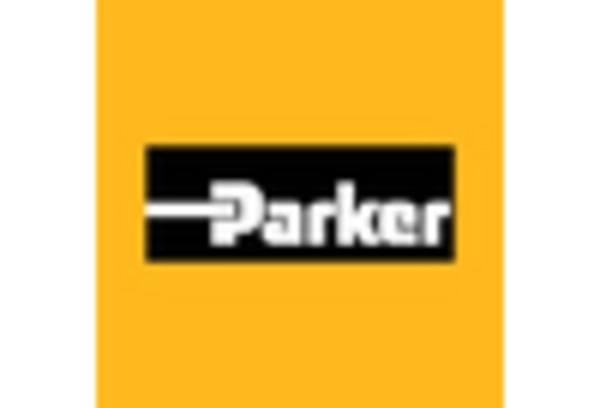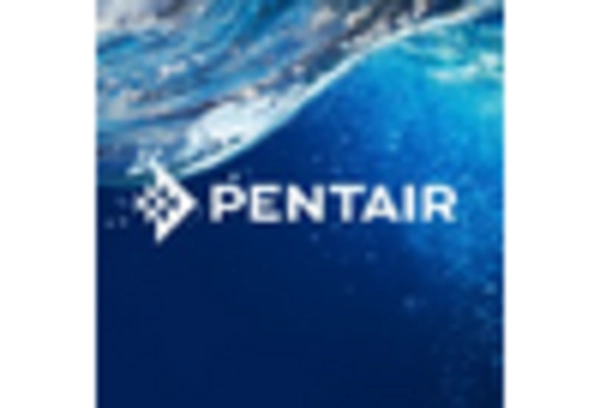Growth in Oil and Gas Sector
The oil and gas sector in the US is experiencing a resurgence, which is positively impacting the safety valve market. With the rise in exploration and production activities, there is a heightened demand for safety valves to manage pressure and prevent accidents. The sector is projected to contribute approximately $1.2 billion to the safety valve market by 2026. This growth is driven by the need for enhanced safety measures in drilling and refining processes, where safety valves play a critical role in maintaining operational integrity. As companies seek to optimize production while ensuring safety, the demand for high-quality safety valves is likely to increase.
Rising Industrial Safety Standards
The increasing emphasis on industrial safety standards in the US is a crucial driver for the safety valve market. Regulatory bodies are mandating stricter compliance with safety protocols, which necessitates the installation of reliable safety valves in various industries. This trend is particularly evident in sectors such as oil and gas, chemical processing, and power generation, where the potential for hazardous situations is significant. As a result, the safety valve market is projected to grow, with an estimated increase of 5.5% annually over the next five years. Companies are investing in advanced safety valve technologies to meet these standards, thereby enhancing their market presence and ensuring operational safety.
Expansion of Chemical Manufacturing
The expansion of the chemical manufacturing sector in the US is a vital driver for the safety valve market. As production facilities increase in number and capacity, the need for effective safety measures becomes paramount. Safety valves are essential in preventing overpressure situations that can lead to catastrophic failures. The chemical industry is projected to account for a significant share of the safety valve market, with an expected growth rate of 4.8% over the next few years. This growth is attributed to the rising demand for chemicals in various applications, necessitating the installation of reliable safety systems to protect both personnel and equipment.
Increased Investment in Infrastructure
Increased investment in infrastructure projects across the US is driving demand for the safety valve market. As the government and private sector allocate funds for upgrading and expanding infrastructure, industries such as water treatment, power generation, and transportation are prioritizing safety measures. Safety valves are critical components in these systems, ensuring that pressure levels remain within safe limits. The infrastructure sector is anticipated to contribute significantly to the safety valve market, with an estimated growth of 5% annually. This trend reflects a broader commitment to enhancing safety and reliability in essential services, thereby bolstering the market for safety valves.
Technological Innovations in Valve Design
Technological innovations in valve design are significantly influencing the safety valve market. Manufacturers are increasingly adopting advanced materials and smart technologies to enhance the performance and reliability of safety valves. Innovations such as automated pressure relief systems and real-time monitoring capabilities are becoming more prevalent. These advancements not only improve safety but also reduce maintenance costs and downtime for industries. The market for technologically advanced safety valves is expected to grow by approximately 6% annually, as industries recognize the value of investing in cutting-edge solutions to enhance safety and efficiency.

















Leave a Comment